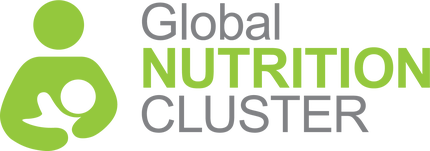Request support on coordination, information management, integration for nutrition outcomes or technical nutrition in emergencies assistance.
التماس الدعم لتنسيق التغذية وإدارة المعلومات والتغذية في حالات الطوارئ
Demander un appui pour la coordination de la nutrition, la gestion de l'information et la nutrition dans les situations d'urgence
Buscar apoyo para la coordinación de la nutrición, la gestión de la información y la nutrición en situaciones de emergencia
Solicite apoio para coordenação em nutrição, gestão de informação e nutrição em emergências
Just weeks after Myanmar finalised its 2021 Humanitarian Response Plan (HRP), the country’s military forces seized power from the Government on 1 February 2021. This plunged Myanmar into a crisis that continues to expand and deepen pre-existing vulnerabilities, pushing a growing number of people into situations of humanitarian need. Access to and delivery of humanitarian assistance is still heavily restricted due to challenges with renewals of Memoranda of Understanding (MoU) for implementing partners and obtaining travel authorization, coupled with massive disruptions to the banking system.
An evolving humanitarian crisis
Concerns over malnutrition in Myanmar are increasing: the original HRP 2021 plus the June addendum (issued as a result of the political situation) identified just under 460,000 people in urgent need of nutrition services with a financial requirement of USD 25.7 M. The workload of the humanitarian nutrition sector for nutrition has expanded as a result of the crisis, with more organizations coming on board and an increased number of geographical areas covered. At the end of March 2021, the GNC Technical Support Team (TST) of skilled nutrition professionals for countries with worsening humanitarian situations, received a request for nutrition coordination support in Myanmar. The GNC response was the virtual deployment of Faith Nzioka, the TST’s Nutrition Cluster Coordinator to support Myanmar in strengthening its existing nutrition coordination mechanism in the face of the evolving humanitarian crisis.
“Nutrition partners are facing an ever more complex operating environment as they navigate a challenging engagement paradigm: working tirelessly to reach affected populations while attempting not to engage with the de facto authorities in a way that legitimizes them,” confirmed Faith.
Emergency Response Preparedness
Key priorities for the 12-week assignment (19 April – 16 July, 2021) were to spearhead development of the country’s Emergency Response Preparedness (ERP) plan, alongside strengthening partner capacity for an immediate response to the current political crisis. Myanmar’s nutrition sector was the first country to use the GNC’s ERP planning guidelines and tools and to finalize the process. The main focus was to mobilize assistance for the additional needs of those affected by humanitarian crises due to various hazards in different parts of the country (particularly COVID-19, armed conflict and floods) and that had not been included in Humanitarian Response Plan (HRP) in 2021.
“One of the biggest challenges in Myanmar is the lack of up-to-date data available on acute and chronic malnutrition (the latest SMART survey is from 2015),” said Faith. “Also, the technical human resources and financial capacities are not adequate for scale-up and for covering the national nutrition response. The nutrition sector has 27 implementing partners, but not all of them have the capacity to provide the minimum technical components of a comprehensive response, especially Integrated Management of Acute Malnutrition (IMAM) and Infant and Young Child Feeding in Emergencies (IYCF-E).”
With support from the GNC, the sector has now developed partner capacity assessment tools. Results from the partners’ capacity assessment exercise held in July 2021 should inform the nutrition sector’s work in the coming days, in order to build capacity to cover the pre-existing and additional needs identified.
Establishing technical working groups
Another key achievement of the TST deployment was to help to establish new Technical Working Groups (TWGs) for IYCF, IMAM and Assessment and Information Management. The TWGs have been set up to support partners and enable them to operate, scale-up and deliver life-saving nutrition activities in the evolving humanitarian environment in Myanmar.
At an inter-sectoral level, contributions towards presenting a case for formal activation of four clusters including nutrition (the other three are Education, Food Security and Child Protection), endorsed from 21 August 2021 in accordance with IASC-agreed procedures, will guarantee accountability and ensure that relief assistance reaches affected people quickly and effectively.
“This was my second remote deployment as a Nutrition Cluster Coordinator and it was a great opportunity to enhance my online facilitation skills,” said Faith.
Delivering remote support
“While I have worked from home before the COVID-19 pandemic, this was a whole new ballgame and building excellent relations in a remote environment with sector/cluster partners can be challenging. The feeling of being disconnected is at times overwhelming, but the responsibility to deliver lifesaving assistance to the most vulnerable, especially children, has been the driving force to overcome the challenges that come with remote deployment,” she claimed.
“Myanmar is on a different time zone and I often had to work at unusual times. Capitalizing on overlapping times to schedule sector meetings and allowing for flexible hours was crucial to being available to respond to pressing concerns. Working with online documents was a great way to collaborate with partners in ensuring everyone had an opportunity to contribute. Regular one-on-one check-ins with TWG Co-Chairs, partners and CLA to track progress on workplans/action points also proved very useful.”
PHOTO CREDIT: © UNICEF/UNI361867/Oo
